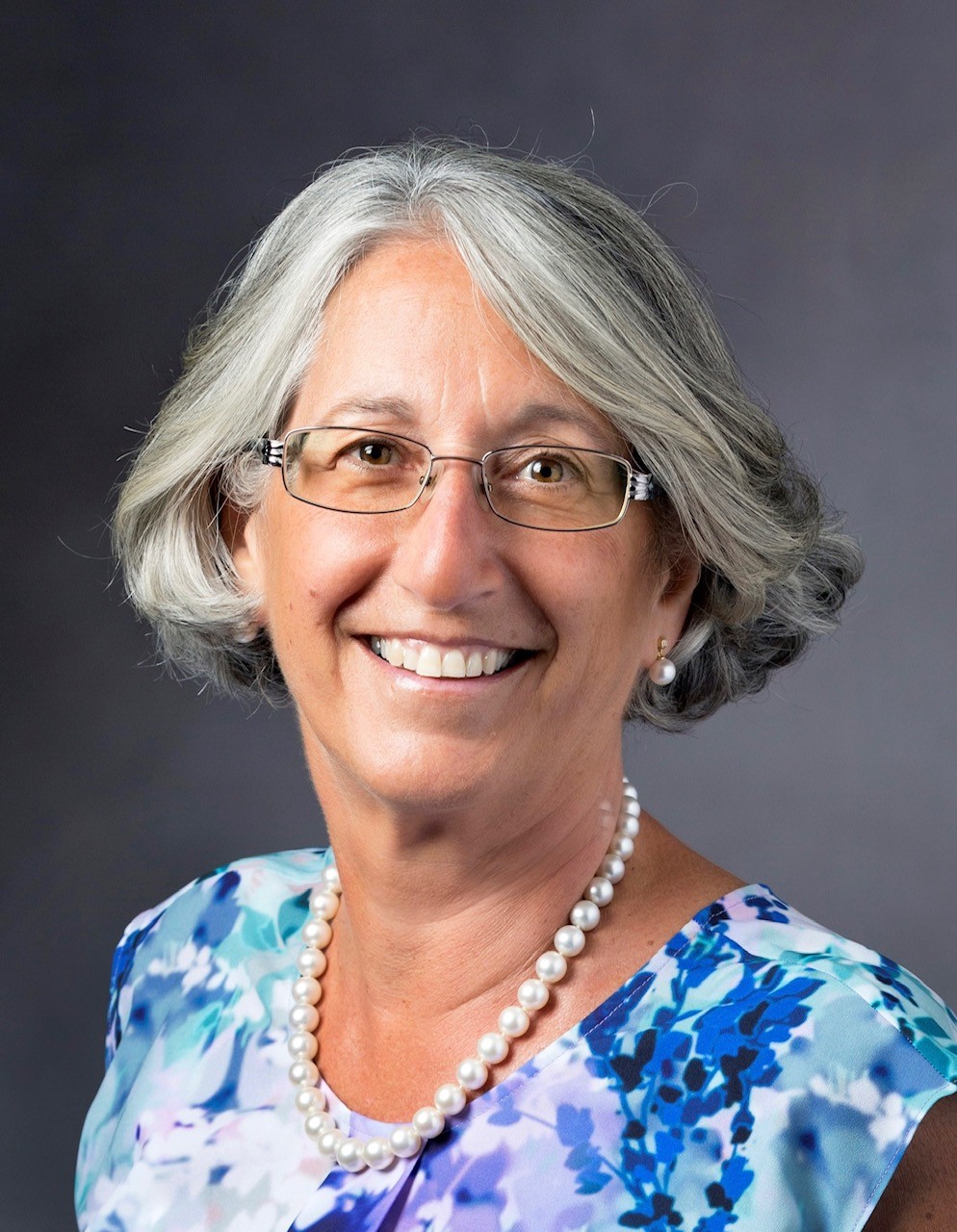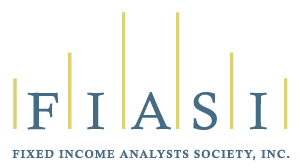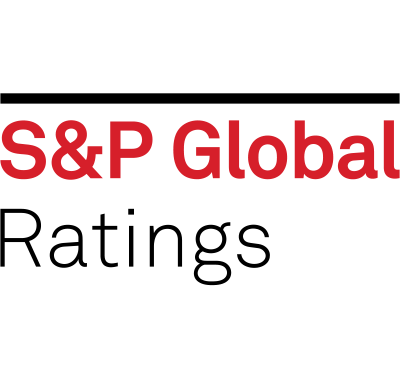|
 Thank you to the FIASI Board for inviting me to join the Fixed Income Hall of Fame.
Thank you to the FIASI Board for inviting me to join the Fixed Income Hall of Fame.
When I looked at the previous inductees, I saw people that inspired me early in my career: Dexter Senft, Larry Fink, and Lew Ranieri, and of course, Marty Leibowitz to name just a few. I’m excited to join this illustrious group.
Please join me in offering a hearty congratulations to Bob Michelle and Steve Berkeley, this year’s co-inductees.
Tonight, I’d like to share a few highlights from my career as well as lessons that you can take away.
I graduated from Cornell with a BA in Economics. At the time, I assumed I would return to school for a business degree or a joint MBA/JD. Boy was I wrong.
My first job was at Morgan Stanley in a computer ‘boot camp’. Imagine me as a computer programmer. While that was not my destiny, it is where I learned bond math.
Morgan Stanley was undergoing a transformation from a small boutique to a full service investment bank. Lots of change; lots of opportunities.
When my boss asked for a volunteer to help launch a mortgage trading department, I raised my hand. At the time, I didn’t even know there was a ‘t’ in the word mortgage.
I discovered the benefits of learning new things building on an already strong foundation.
After attending a few events where First Boston’s head of Fixed Income Research, Dexter, was a speaker I realized it was time to join a market leader.
In 1985, I joined First Boston which — together with Salomon Bros — shared an 80+% market share in mortgage-backed securities. With Larry Fink leading the charge, First Boston had become a powerhouse through innovations such as CMOs.
I joined the Product Development Group and soon after became the leader of the Portfolio Products Team. Our team worked with issuers to create billions of CMOs and REMICs, and IOs and POs in a market that was rapidly changing.
I’m glad one of the super stars from this team is able to join us here tonight.
A technical change in the tax code, opened an opportunity to create the senior/subordinated structure. I led the team that worked with Home Savings to issue the first whole loan-backed securitization using this structure.
Home Savings had an exemplary record:
- high underwriting standards,
- no claims on their private mortgage insurance, and
- a willingness to self-insure by holding the subordinated piece.
All spelled out in the prospectus.
It was unimaginable that this structure would be bastardized 20 years later
- with mortgage originators underwriting garbage loans,
- rating agencies competing for market share, and
- everyone passing the hot potato as fast as they could.
The markets changed rapidly over the next few years. Spreads were collapsing in the mortgage securitization business. In 1987, against this backdrop, the stock market crashed. Wall Street needed to shrink…..fast. Early the next year, Larry Fink announced he was leaving to start a buy-side firm.
You can think of BlackRock as a dot-com firm before dot-coms existed.
A group of eight people with
- a lot of experience in the markets,
- a deep well of enthusiasm,
- some great professional contacts, and
- a vision about risk management
- and not much else
We jumped out a window holding hands. From this, BlackRock emerged. And, the rest is history. We are joined tonight by Ben Golub who was one of the key visionaries for BlackRock’s business and a close partner since my early days at First Boston.
Looking back, we can see many ways that BlackRock revolutionized the asset management industry starting with the launch of the firm:
- First as a mortgage specialist.
- Then as the creator of the first ‘term trust’.
- Then as evangelicals preaching the importance of risk management to institutional investors worldwide.
This was followed by successful acquisitions to diversify our business along:
- Asset class,
- Geographical, and
- Product lines
Along the way, we introduced numerous product innovations, including:
- synthetic GICs,
- LDI strategies,
- bond ETFs, and, of course,
- the Aladdin trading platform.
Our vision and enthusiasm were paired with my team’s ability to listen to clients and deliver solutions to the problems most important to them.
We could not have succeeded without the support and early adoption by certain plan sponsors and consultants.
I’m honored that several of these forward-thinking individuals as well as current employees and alumni of BlackRock who contributed to these successes are here tonight.
As you can imagine, 2008 was a turning point for the entire industry.
In the wake of the Great Financial Crisis, BlackRock immediately acknowledged that changes were needed and we embraced financial regulatory reform.
I started the Global Public Policy Group to bring a ‘voice of investors’ to this process.
The group engaged with policy makers literally around the globe from Washington to London to Brussels to Frankfurt to Hong Kong to Singapore to Sydney to Tokyo and quite a few more.
I needed a lot of extra pages in my passport.
In 2009, we established a North Star for our team’s efforts, clearly stating: “We support financial regulatory reforms that increase transparency, protect investors, and facilitate responsible growth of capital markets.”
With the caveat that changes should preserve consumer choice and balance benefits versus implementation costs.
While you might have noticed we got a lot of press for avoiding a SIFI designation, our team’s primary focus was ‘good hygiene’ for the markets and good outcomes for investors.
FOR EXAMPLE:
- You may remember the Dodd-Frank decision to move to central clearing for interest rate swaps.
- Our team supported this change, however, we flagged the importance of segregating client collateral.
- After the MF Global debacle in 2011, the Commodity Futures Trading Commission (or the CFTC,) voted 4-1 to endorse our solution for protecting customer funds.
Along the way, we forged relationships with regulators, legislators, academics, and even competitors as part of our strategy to find practical solutions to real world issues.
Our team was proud to bring a voice of investors to these discussions and to have an impact on a host of legislation and regulations around the world.
As Robin said in his remarks: “It’s not your grandmothers’ bond market anymore.”
One of the services our team provided was insights into the rapidly evolving bond markets.
From new asset classes such as bank loans to new electronic trading platforms to new market makers, and ultimately to new products such as Bond ETFs.
BlackRock’s policy team differentiated ourselves by bringing data to the discussions earning the trust and respect of many policy makers.
When the COVID Crisis occurred, these relationships were critical to averting a financial crisis on top of the unfolding humanitarian crisis.
We brought market insights and suggestions for how to navigate turbulent waters from the perspective of practitioners actively engaged in the markets.
FOR EXAMPLE:
In March 2020, the Fed and other central banks were trying to provide liquidity to the short-term over-the-counter markets.
I realized that every bond index portfolio was going to rebalance at the end of March by selling 1-year Treasuries as they became 11-month Treasuries.
While no individual fund or portfolio expected to have a problem, the collective action across billions of dollars would suck the liquidity out of that sector of the market, effectively undermining the Fed’s efforts.
Working with the index providers and regulators in multiple jurisdictions, our team helped to orchestrate an unprecedented delay in the monthly rebalance.
The April rebalance included a catch-up for March.
Most of you never heard about this.
That was an incredible success!
One of the most interesting plot twists to come out of the COVID Crisis was the change in perceptions about Bond ETFs.
Using actual data, BlackRock was able to show policy makers that Bond ETFs were heroes adding liquidity to the bond markets.
This conclusion was in direct contrast to the Armageddon scenario that many academics and policy makers had predicted for Bond ETFs as potential villains during a market liquidity event.
At one point, someone accused BlackRock’s public policy team of epistolary excess.
I had to look that one up — it means producing a series of letters.
My reaction: Guilty as charged!
I’m happy that many current and alumni members of BlackRock’s Public Policy team as well as some close partners from other BlackRock groups who contributed to our extensive library of published ViewPoints and comment letters are here tonight.
These publications were essential for educating policy makers.
Now that you’ve heard the Readers Digest version of my career, let me offer my Top Five Professional takeaways:
- Seize the opportunity to try something different and learn something new.
- Embrace all sorts of change and turn that change into opportunity.
- Don’t be afraid to question; the experts just might be wrong.
- Create a network or a team of people who can provide diverse perspectives that produce better solutions.
- Put yourself in the clients’ shoes and propose solutions and ideas for improvements as constructive ideas are appreciated.
Before I wrap up, let me share a few reflections as a woman in bonds.
To put this in perspective, tonight’s FIASI event could not have happened in this room when I began my career.
- Back then the Union League was male-only.
- AND, there were no senior women in fixed income – or any other areas of Wall Street -- to induct into a hall of fame.
We’ve come a long way!
Today, there are hundreds – maybe thousands -- of senior women at investment banks and investment managers filling many different roles.
And several women have been inducted into FIASI’s Hall of Fame.
It’s great to see these inspirational role models for the next generation!
Younger women often ask how I juggled a career in finance with having a family.
Frankly, I never set out to be a trailblazer.
Looking back, I realize that taking it one step at a time turned into a path.
Here are my Top Five Personal takeaways (Importantly, these takeaways apply to men as well as women.):
- Establish a support system; you need peace of mind to do your best work.
- Harness technology; so many tools are available today to leverage your time.
- Prioritize your time, and don’t be embarrassed to invest in yourself by outsourcing some tasks.
- Recognize that you can have it all, just not necessarily all at once.
- And, finally, inspire others and reach back as a mentor.
- You may be surprised how satisfying that can be for the mentor not just for the mentee. I’m personally gratified to see so many mentees here tonight.
Let me conclude with a giant thank you:
- to Clients and consultants who trusted us to manage their money.
- to Policy makers who openly shared their concerns and were willing to consider new ideas.
- to Colleagues with whom I have shared this career journey.
- And, of course, to my husband and children who supported my career.
Without all of YOU, we wouldn’t be here tonight!
Thank you!








